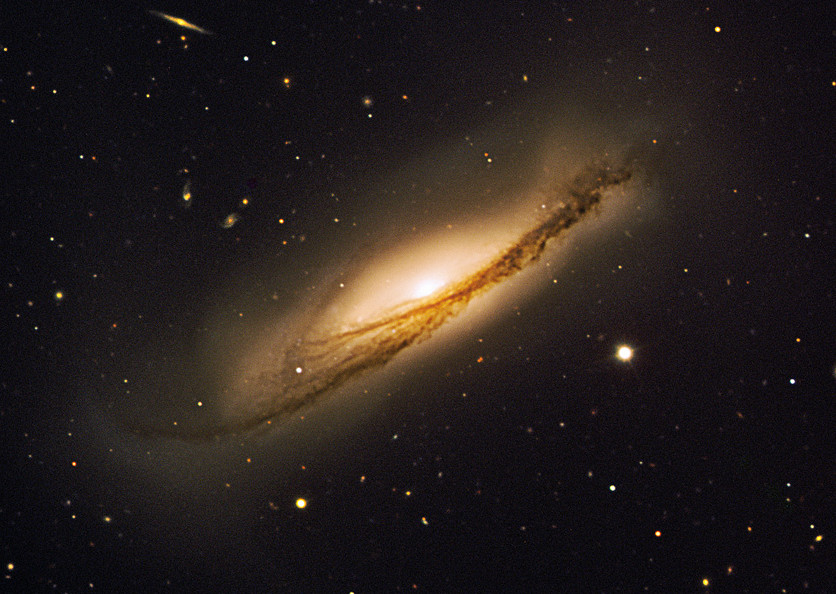

NGC 3190, today’s featured image, is certainly a personal favorite of mine. It lurks approximately 60 million light-years away from Earth toward the constellation of Leo. This image, taken using the ESO’s Very Large Telescope, highlights the galaxy’s best features, and puts the galaxy as a whole in a rather dusty light.
From this nearly edge-on vantage point, NGC 3190’s asymmetric spiral arms are clear, as is the central region of the galaxy, with additional focus placed on its slightly-warped disk. It seems like a foregone conclusion, that this particular oddity should be chalked up to gravitational encounters, since NGC 3190 is not alone. It, along with a neighboring galaxy, are often included as members of the Hickson 44 galaxy group.
Not included in this stunning image is SN 2002bo: a supernova remnant that was forged within the V-shaped dust lanes of a southwestern section of NGC 3190. Of course, it is obscured almost entirely by the large volume of dust the galaxy boasts.
The ESO notes: “This colour composite is based on images obtained on 26 March 2003 with FORS1 on UT2 (Kueyen) in four filters (B, V, R and I) for a total exposure time of 14 minutes. The observations were done in the framework of a programme aiming at studying the physics of Type Ia supernovae. The field of view is 6.15 x 5 arcminutes. North is up and East is to the left. The data extraction from the archive, data reduction and final colour processing of the image was done by Henri Boffin (ESO).”